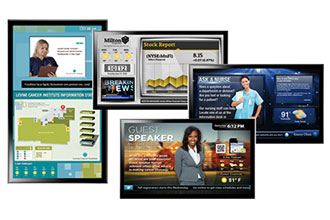Essential Elements of a Successful Kiosk Solution Implementation: What Should You Ask Your Hardware Vendors?
The following is reprinted with permission from the Digital Screenmedia Association (DSA). For more information, go to http://www.digitalscreenmedia.org.
 In the kiosk business, hardware is a “necessary evil.” It’s constantly changing; it’s a moving target. Hardware breaks in the field, it needs upkeep, and it has power outages. Ouch.
In the kiosk business, hardware is a “necessary evil.” It’s constantly changing; it’s a moving target. Hardware breaks in the field, it needs upkeep, and it has power outages. Ouch.
All these scenarios reflect the need for a strong hardware partner for any digital merchandising program you take on. Ask the tough questions to get the best quality vendors.
Any strong hardware provider should embody these five competencies:
1. National Support Network
Most important during the pilot and initial program development, you’ll need to find someone who can work quickly and easily to spec and test for the right hardware solution. The key is to find just the right combination of performance and form. There’s no need to pay for what you don’t use, but what you get must be up to the task.
2. Flexibility
Are they equipped to use off-the-shelf hardware for prototyping and a custom configured unit for rollouts? Will they allow you to vary RAM, CPU requirements and case size? Do they have the resources to image the units prior to delivery?
3. Turn-key Supplier for All Hardware
Will you use a monitor with a CPU or an all-in-one unit? If you are looking for a unit that has a touch screen, rugged keyboard, card swipe, and printer, all from different providers, it becomes complex quickly. Each part is likely to have its own warranty and service terms. In light of this reality, it’s best to choose a hardware vendor that can act as your key contact and supplier.
4. Quality Warranty & Service
What is their typical service plan? Do they send you to the service depot or offer field replacement? Most digital merchandising projects have a minimum of a three-year lifespan. Are they committed to be your partner for the long term?
5. Trust
The hardware trade in the past has been very hit and run. Some suppliers will deploy thousands of units at a time, without offering the support necessary. When something goes wrong, they are nowhere to be found, or their resolution is, return it and we’ll send you a new one. Getting 20 prototypes to work is easy, but keeping a fleet of 1,000 units in the field for three years is a very different task. It’s essential to know you are working with a hardware vendor that’s committed to you from beginning to end.





